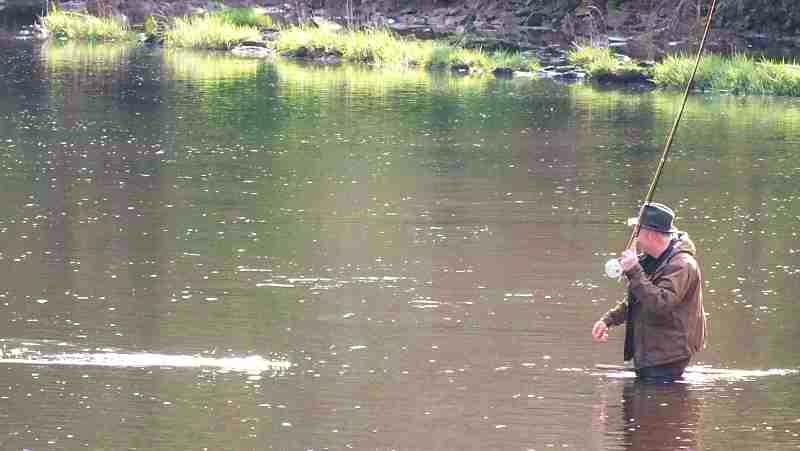Catch and Release – River Ayr
Catch and release is vital to help protect and restore salmon stocks in our rivers. Give your salmon the best opportunity of reaching the spawning redds. Please follow this advice:
(Courtesy The Wye & Usk Foundation)
Tackle
Use small, barbless hooks, singles or doubles:
- They do less damage
- Unhooking is quicker
- It’s illegal to use large hooks
- Use size 6, or preferably smaller.
Always use as strong a leader or line as possible. This will ensure the fish can be brought to the net quickly and safely.
Spinning
Salmon often take Flying Cs deep and more than 10% die. Fitting a barbless single will help but it’s better to use other lures, with hooks altered, or to fly fish.
Worm fishing often results in fish dying. Where worm fishing is allowed, using a circle hook (above) will reduce the chances of deephooking.
Planning Ahead
Before fishing a pool, always identify where a fish can be safely landed without risk of damage on rocks or stones. If fishing alone, take a net. Traditional large mesh salmon nets can cause split fins and tails. Have long-nosed forceps or a similar tool close to hand for prompt hook removal. If you want a photo of your salmon before release, have your camera ready, for example, on a neck lanyard.
Playing Fish
Fish should be played quickly and as firmly as possible so that they can be released before becoming too exhausted.
Landing Fish
We urge you not to lift the fish out of the water by any means if it is at all possible. At the very least, never lift your salmon from the water by its tail, or gill cover: you will cause internal damage. Avoid taking them onto the bank or dragging them over stones or gravel.
Use a soft, knotless net with small mesh size with a shallow, wide bottom to allow the fish to lie flat. Knotless mesh is a legal requirement.
Fishing From Boats
If fishing from a boat, where convenient, take the boat to the shore to land the fish. If the fish is landed in a boat, ensure that the fish is laid on a flat, wet surface for unhooking. A soaking wet towel or unhooking mat is ideal for this purpose. Laying the fish upside down will often calm it for unhooking. Fish produce most of their energy from their tails, and so holding down the tail on a flat surface will keep a fish still.
Unhooking & Recovery
When the fish is quiet, remove the hook carefully and promptly with forceps. If you rupture a blood vessel you may kill the fish.
Fish should be allowed to recover and returned in steady clean water, but not in a fast flow. Recovery may take some time.
If fish are deep-hooked, particularly in the gills, it may not be possible to remove the hook – snip the line close to the hook. This will cause less harm to the fish than removing it.
As an additional precaution, it is wise not to fish at all during extended periods of hot weather.
Recording Your Catch
Only lift the fish from the water for the minimum time necessary.
Photography – Keep the fish in or briefly just above the water. Support the fish gently under the belly and loosely hold the wrist of the tail.
Weighing – If possible, use a weigh net, or scales hooked on to a conventional net.
Measuring – Do it in the water. Take a tape measure or mark up your wading staff or the butt section of your rod as an easy indicator.
Weight can be estimated from length – see the Environment Agency scale. Fish should be measured from the nose to the fork of the tail.



